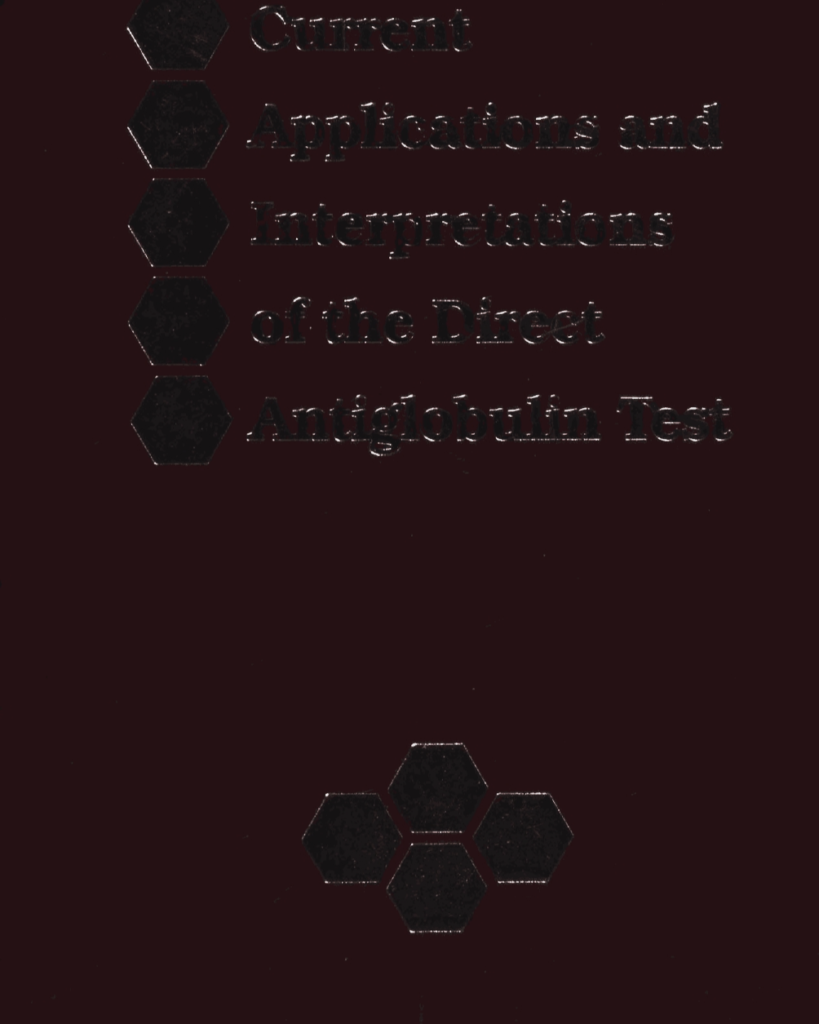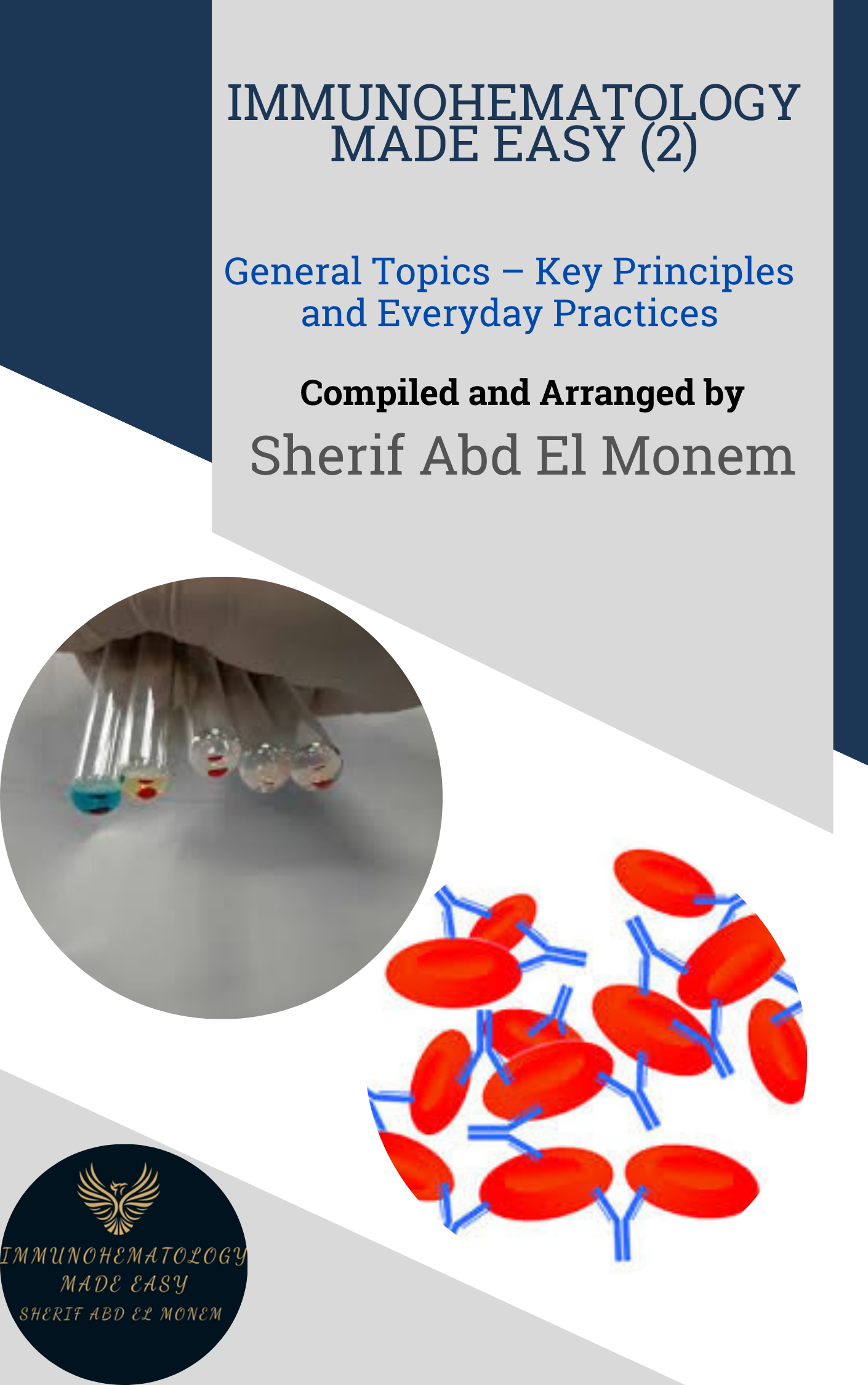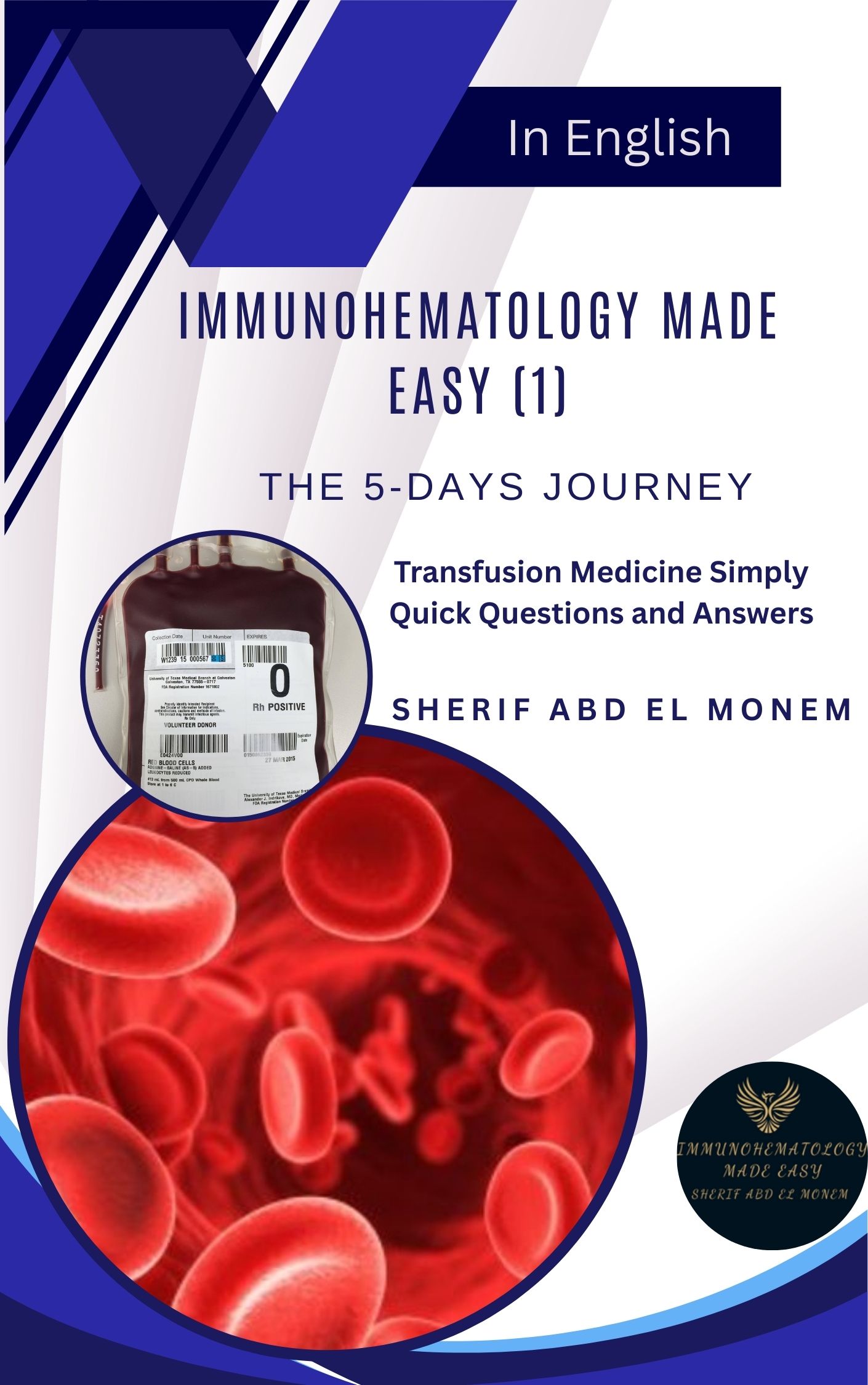

Immunohematology Made Easy (2)
General Topics – Key Principles and Everyday Practices
📘 Available now in PDF & EPUB formats
🔗 Visit Store
Book Review: Current Applications and Interpretations of the Direct Antiglobulin Test (1988)
Introduction: Unlocking the DAT
The Direct Antiglobulin Test (DAT), often called the Direct Coombs Test, is a cornerstone procedure in immunohematology and transfusion medicine. But what does a positive result truly signify? While seemingly simple, the DAT's interpretation can be complex, requiring careful consideration of clinical context, reagent specifics, and patient history. This review delves into the 1988 AABB publication, "Current Applications and Interpretations of the Direct Antiglobulin Test," a foundational text dedicated to navigating the intricacies of this vital assay.
Book Title: Current Applications and Interpretations of the Direct Antiglobulin Test

Immunohematology Made Easy (2)
General Topics – Key Principles and Everyday Practices
📘 Available now in PDF & EPUB formats
🔗 Visit Store
Publisher: American Association of Blood Banks (AABB)
Publication Year: 1988
Editors: Margaret E. Wallace, MHS, MT(ASCP)SBB & Judith S. Levitt, MT(ASCP)SBB
About the Editors (1988)
At the time of publication, the editors were experienced professionals in the field:
- Margaret E. Wallace, MHS, MT(ASCP)SBB: Vice-President, Medical-Technical Services, Louisiana Blood Center, Shreveport, Louisiana.
- Judith S. Levitt, MT(ASCP)SBB: Chief Technologist, Transfusion Services, Parkland Memorial Hospital, Dallas, Texas.
Their expertise, alongside contributions from leading experts like George Garratty and W. John Judd, lends significant authority to this volume.
This book serves as a focused guide aimed at clarifying the DAT's role, methodology, and clinical relevance. It addresses common scenarios, potential pitfalls, and the crucial link between laboratory findings and patient outcomes. It was primarily intended for medical technologists, specialists in blood banking (SBB), clinicians, and researchers involved in transfusion medicine and immunohematology.
Comprehensive Summary of the Book
This AABB publication systematically explores the DAT through focused chapters contributed by experts:
Chapter 1: The Clinical Significance (and Insignificance) of Red-Cell-Bound IgG and Complement (George Garratty)
- Explores the baseline levels of IgG and C3 on normal red blood cells (RBCs).
- Discusses factors influencing the *in vivo* destruction of antibody/complement-coated RBCs (e.g., IgG subclass, quantity, RES activity).
- Highlights the crucial distinction between a positive DAT and clinically significant hemolysis, covering scenarios like:
- Positive DATs in healthy individuals.
- Positive DATs without hemolytic anemia.
- Autoimmune Hemolytic Anemia (AIHA) with a negative DAT.
- Introduces the concept of RBC senescence and its potential link to RBC-bound IgG.
Chapter 2: Use of the Direct Antiglobulin Test in Routine Testing (Susan F. South)
- Traces the historical evolution of the Antiglobulin Test (AGT).
- Details the types and characteristics of antiglobulin reagents available in 1988 (polyspecific, monospecific IgG, anti-C3d, monoclonal).
- Provides a practical guide to the DAT technique, including sample requirements (EDTA preferred), washing steps, incubation, reading, and the use of control cells.
- Discusses common causes of false-positive and false-negative results.
- Introduces the principles and applications of Red Cell Elution techniques.
Chapter 3: Investigation and Management of Immune Hemolysis—Autoantibodies and Drugs (W. John Judd)
- Offers a comprehensive framework for investigating suspected immune hemolysis, emphasizing the integration of clinical findings (age, race, history, medications) with laboratory data.
- Addresses resolving ABO and Rh typing discrepancies caused by autoantibodies.
- Details strategies for testing for alloantibodies in the presence of autoantibodies (e.g., adsorption techniques).
- Covers transfusion management principles for patients with AIHA.
- Provides an extensive overview of Drug-Induced Immune Hemolysis, outlining mechanisms (autoimmunity induction, drug adsorption, immune complex) and testing approaches.
- Notably, this chapter includes numerous detailed appendices outlining specific laboratory procedures (e.g., Cold Agglutinin Titration, Donath-Landsteiner Test, ZZAP treatment, Adsorption methods, Drug antibody detection).
Chapter 4: Application and Interpretation of Direct Antiglobulin Test Results as Applied to Healthy Persons and Selected Patients (Barbara Laird-Fryer)
- Focuses heavily on the concept of Predictive Value Analysis for the DAT in different populations.
- Examines DAT results in healthy blood donors and discusses the significance (or lack thereof) of positive findings.
- Analyzes the incidence and interpretation of positive DATs in general hospital patients, including links to conditions like renal disease and AIDS (as understood in 1988).
- Applies DAT interpretation to specific clinical scenarios:
- Transfusion Reactions (immediate and delayed).
- Hemolytic Disease of the Newborn (HDN), covering ABO and other antibody types, incidence, and recommended testing protocols.
- Discusses cost analysis related to DAT evaluation protocols.
Strengths and Unique Aspects of the Book
Key Strengths:
- Authoritative Source: Published by the AABB and edited/authored by leading experts in the field at the time.
- Practical Focus: Strongly emphasizes the clinical relevance and practical application of DAT results, moving beyond just the technical aspects.
- Balanced Perspective: Addresses both the significance *and* insignificance of a positive DAT, a crucial distinction often overlooked.
- Comprehensive Coverage (for its time): Covers routine testing, AIHA, drug-induced hemolysis, HDN, transfusion reactions, and specific patient populations.
- Detailed Methodologies: Includes valuable appendices with step-by-step laboratory procedures relevant to DAT investigation.
- Clinical Correlation: Consistently stresses the need to interpret DAT results within the broader clinical context of the patient.
Critical Analysis & Limitations
Limitations:
- Publication Date (1988): This is the most significant limitation. Immunohematology is a rapidly evolving field. Reagents (especially monoclonal antibodies), techniques (e.g., solid phase, flow cytometry, molecular methods), and AABB Standards have advanced considerably since 1988. Therefore, specific technical details, reagent discussions, and some protocols may be outdated.
- Outdated Context: Discussions regarding certain conditions (like AIDS) reflect the understanding and terminology of the late 1980s.
- Focus on Conventional Techniques: While foundational, the book doesn't cover newer technologies that are now common in transfusion services.
- Edited Volume Structure: As with many multi-author volumes, there might be minor variations in style or depth between chapters, though the editing appears consistent.
The technical language is appropriate for its intended audience (laboratory professionals and clinicians) but might be challenging for absolute beginners without supplementary resources.
Key Takeaways & Practical Applications
Readers (especially those interested in the historical development or foundational principles) will gain valuable insights into:
- The fundamental principle that a positive DAT does not automatically equate to immune hemolysis.
- The importance of correlating DAT results with clinical signs, patient history, and other laboratory findings.
- Factors influencing RBC survival when coated with antibodies or complement.
- The nuances of antiglobulin reagents and DAT techniques (as performed in the 1980s).
- Systematic approaches to investigating AIHA and drug-induced immune hemolysis.
- The concept of predictive value and its application to DAT screening in different populations (donors, patients, newborns).
- Specific considerations for interpreting DAT results in transfusion reactions and HDN.
- Detailed laboratory procedures (via appendices) for adsorption, elution, titrations, etc., providing a solid understanding of traditional methods.
Conclusion & Final Recommendation
"Current Applications and Interpretations of the Direct Antiglobulin Test" (1988) stands as a significant and authoritative resource from its era, offering a deep dive into the practical aspects and clinical interpretation of the DAT. Its strength lies in the expert contributions, the emphasis on clinical correlation over isolated lab results, and the inclusion of detailed methodologies.
However, its 1988 publication date means it must be approached with caution. While the fundamental principles of immunohematology remain, specific techniques, reagents, and standards have evolved. It is **not** a substitute for current AABB technical manuals or standards.
Who should read this book?
- Blood Bank Professionals & Researchers: Excellent for understanding the historical context and foundational principles behind DAT interpretation and investigation strategies.
- Trainees & Students: Useful as a supplementary text to grasp core concepts, *provided* it is read alongside current materials and guidance.
- Medical Historians: Provides a snapshot of immunohematology practices and understanding in the late 1980s.
Verdict:
A valuable **historical and foundational reference** for those deeply involved in immunohematology. It's best used to understand the 'why' behind many practices and the complexities addressed by experts. Borrow or acquire for reference if you need historical depth, but rely on **current resources for contemporary practice.**
What are your experiences with interpreting complex DAT results? Share your thoughts in the comments below!
For current guidelines, please refer to the latest editions of the AABB Technical Manual and Standards for Blood Banks and Transfusion Services.

Immunohematology Made Easy (2)
General Topics – Key Principles and Everyday Practices
📘 Available now in PDF & EPUB formats
🔗 Visit Store

📘 New to Blood Bank?
Start your 5-day journey with Immunohematology Made Easy — a simple, beginner-friendly guide with real-life examples!
👉 Get Your Copy Now